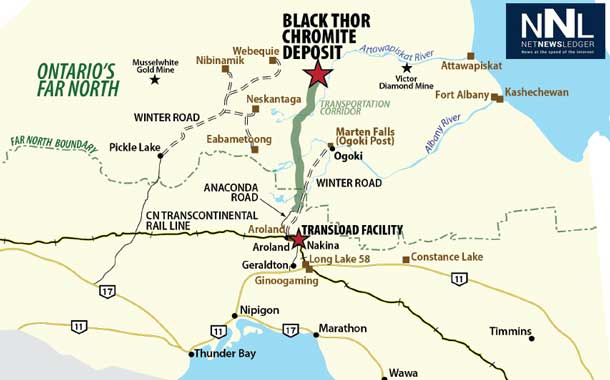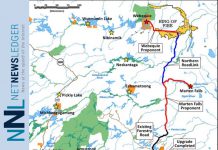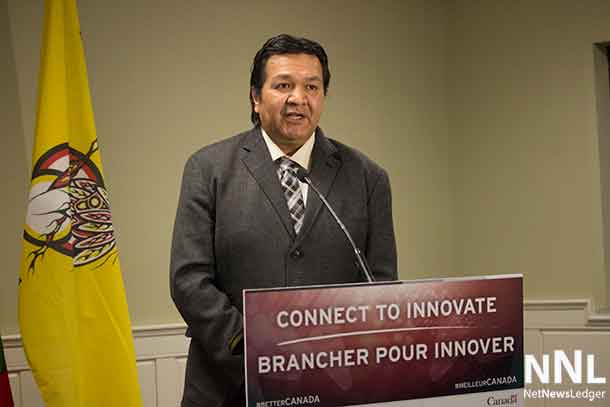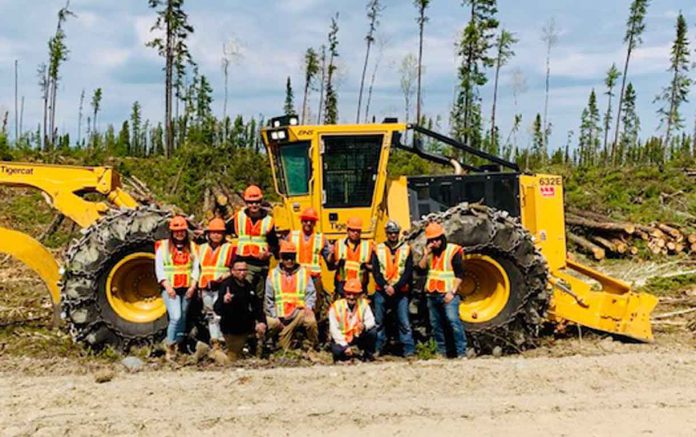
THUNDER BAY – BUSINESS – The Agoke Development Corporation (ADC) hosted Tigercat and Wajax Dealer representatives from Brantford, Hearst and Thunder Bay to an onsite training demonstration on May 28th in the Ogoki Forest. ADC is a forestry company that consists of the First Nations of Aroland, Eabametoong and Marten Falls and is building capacity through a training program administered by Confederation College.
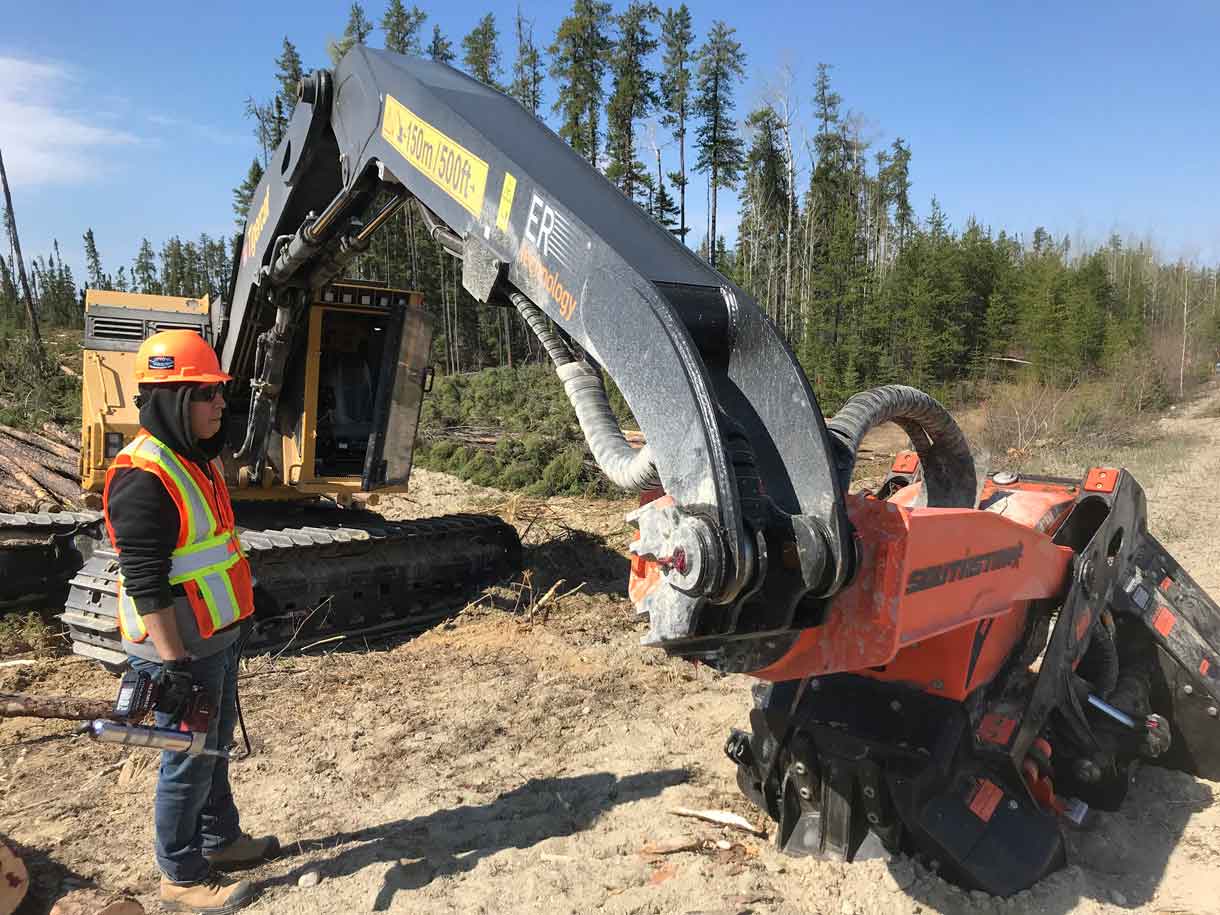
It was an opportunity for 10 trainees from the three First Nations to display their newfound skillset in the operation of mechanical harvesting equipment. Just a few weeks earlier none of them had any idea what a feller buncher, skidder or harvesting processor looked like. Today, they are learning and adjusting very quickly to the fast-paced production environment.
The lead trainer Brad Goliboski of Goliboski Contracting Inc. is impressed with how far each of them has come in such a short amount of time.
“There are operators out there, but they don’t have the kind of skills and experience we need for working in the rugged uplands and lowlands of the remote Ogoki Forest” stated Goliboski.
When asked could First Nations be a part of the solution to the labour shortage problems in Northern Ontario? Brad Goliboski believes so.
“We’re already working with First Nations in the region and we are very optimistic that they can have massive human capital potential. They live in the North and they have a vested interest in the land. They want the best for the environment, but they also want the economic benefit for their First Nation peoples,” Goliboski added.
According to ADC’s Aroland Board Director – Mark Bell, the feelings are mutual “we are very excited to promote forestry careers and the spin-off economic opportunities to the First Nations within our traditional territories. We view the regional forestry shortfall as a golden opportunity for our peoples. Obviously, there are many from Aroland, Eabametoong and Marten Falls already working in forestry but the goal now is to open the door wider and facilitate training,” Bell said.
ADC’s Eabametoong Board Director – Bill Spade wants to see the younger generation take advantage and fill the void. “There still is a lot of work to do to help young First Nation peoples realize their true potential and make a career in forestry. This will require a wholistic approach with First Nations, government and the forest industry companies collaborating on workforce development strategies like promotion, internships, training programs, recruitment, retention and advancement. These are all key pillars of the Agoke Joint Venture Agreement that we have in place with the Nakina Sawmill,” Spade stated.
ADC’s Marten Falls Board Director – Lawrence Baxter is also looking to train millwrights, saw filers, and electricians but states that other supports need to be put in place if they are to be successful in the long run. “We haven’t forgotten about pre-employment training, life skills, self-confidence building exercises, and wrap around support for retention. We are also looking to develop partnerships with businesses that involve First Nations peoples within their forest companies, this is core to Agoke’s procurement policies”, Baxter said.
Not being able to find the type of employees needed today is a problem for the forest industry and contractors, but also presents an opportunity to find connections with First Nations and access an enormous labour force pool that is growing enthusiastic about participating in forestry. “Grant programs are very helpful, but we need a sustainable strategy to mitigate the costs of on the job training. One recommendation is for Ontario to provide a tax-credit for contractors, this would ensure the next generation of workers acquire the knowledge to be safe and productive before the trade is lost to retirement,” Baxter says.
For the current 10-week training program each participant was required to complete 6-weeks in a classroom with life skills and safety training modules related to the heavy equipment. When it came to procuring the equipment it was through contact with Wajax Thunder Bay that Tigercat machines became available. “I had operated all types of heavy equipment, especially Tigercats. I knew what they were capable of, I knew that the manuals and the support from the dealership would be reliable and consistent. Everything works better, the First Nation trainees are more relaxed with it and it provides far better performance, overall,” stated Goliboski. A Tigercat Buncher 845d, Skidder 632E and Harvester H822D were secured for the training and moved up 400 KM Northeast of Thunder Bay in early May.
One of the trainees is 24-year-old Dillon Atlookan from Eabametoong First Nation. Dillon faced a very steep learning curve as an operator with absolutely no mechanical harvesting experience and Brad came up with a progressive training solution for Dillon. “The buncher provided Dillon with an opportunity to get accustomed on the motions of the Tigercat machine, how it traveled, the joysticks and upkeep. Felling and bunching trees provided significantly less challenge than trying to figure out the harvester head,” said Goliboski. “Dillon would spend the morning in the buncher working on an area, while others harvested on an adjacent strip. For the second half of his shift, Dillon would get in the skidder and then harvester that had been operating, and process on the buncher piles he had made earlier that day. The training allowed him to gain the foundational operating skills in the Tigercat, and processing from the piles gave him skills operating the harvester head, without the challenge of felling trees. This week he is doing so well that he began to harvest standing trees and only had to add that one skill to all the skills he built bunching, skidding and processing,” said Brad.
Dillon Atlookan is looking forward to getting on with a production crew and is stepping up in a leadership role to mentor other First Nations youth in forestry. “I love working in the woods, on the traditional lands, I like working with the big machines, its easy. I have a great crew of people to work with. This all makes going to work out in the bush a lot of fun and rewarding,” said Atlookan.



